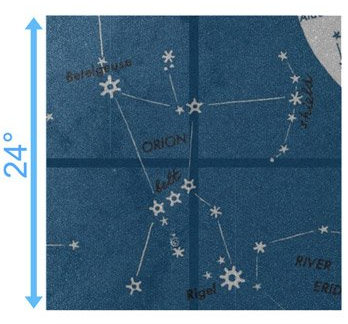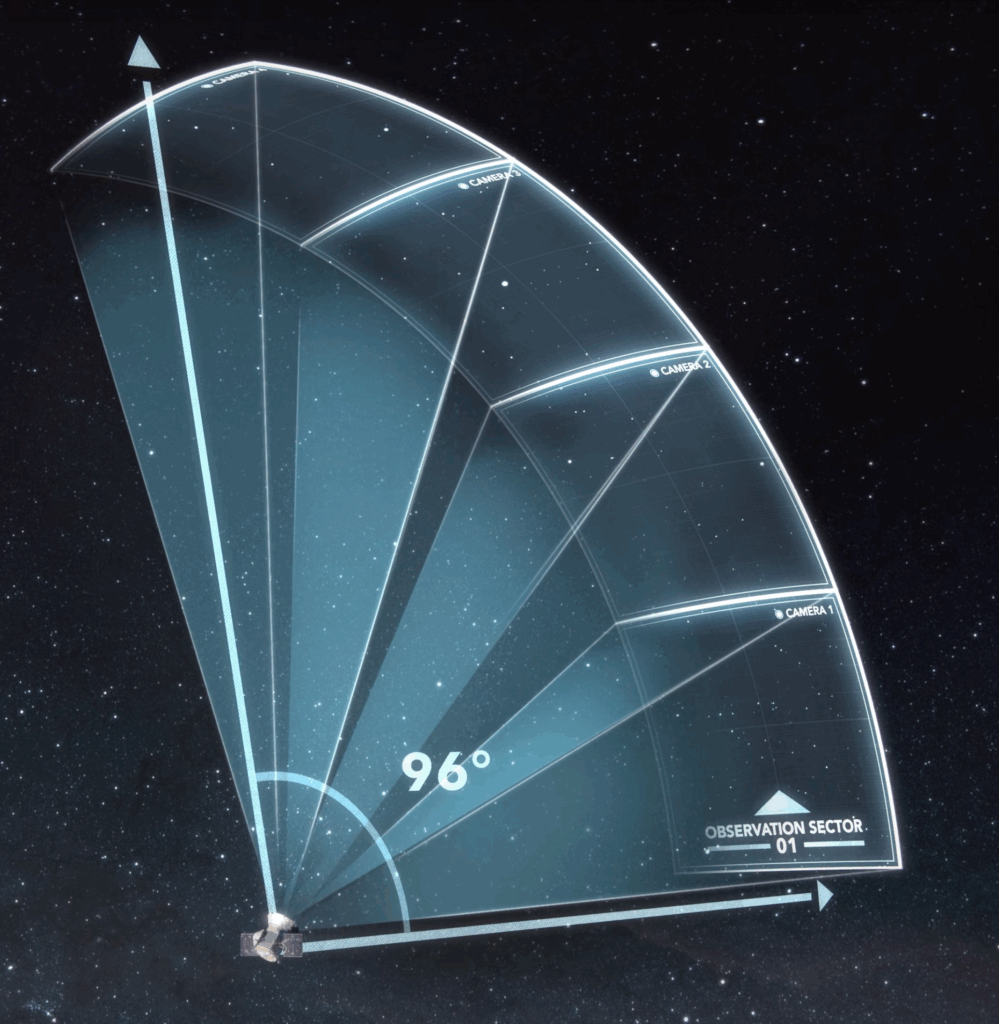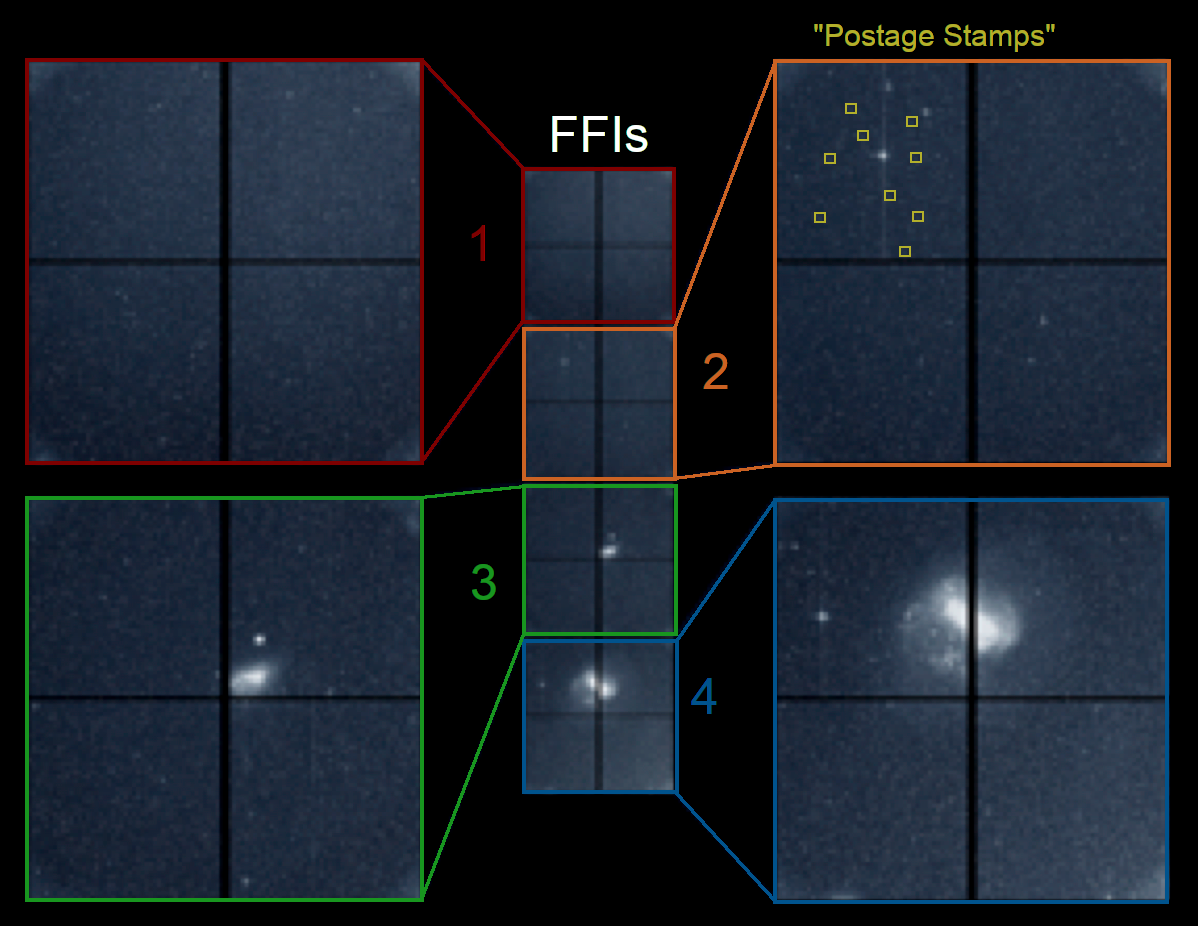The TESS mission generates a wide variety of data products, including calibrated Full Frame Images (FFIs) at 200s cadence, calibrated postage stamp images at 20s and 120s cadence, light curves for postage stamp targets and QLP light curves for all targets in the FFIs brighter than Tmag = 13.5. All TESS Data Products are available immediately after processing at the Mikulski Archive for Space Telescopes (MAST).
Types of Images
TESS takes exposures at a cadence of 2 seconds.
The 2-second data is used for spacecraft guiding, but they will not be downloaded to the ground. For a few very bright asteroseismology targets, the pixels in little postage stamps surrounding the star are downloaded at 20 second cadence. This is to maximize sensitivity to detecting short-period oscillations in stars. The core planet search star sample consists of 200,000 stars, over the whole sky. These are primarily nearby dwarf stars.
Pixels in postage stamps around these stars are downloaded at 2 minute cadence which is short enough cadence to help resolve the ingress and egress for many of the brighter planet candidates.
Finally, during the Prime Mission every single pixel that TESS observes were downloaded at 30 minute cadence in the Full Frame Images (FFIs). In the First Extended Mission (EM1) the FFI cadence was increased to 10 minutes, and in the Second Extended Mission (EM2) the FFI rate was improved again to 200 seconds. This uniform dataset allows general variability studies for the (vast majority) of stars and galaxies that might not make it into the postage stamps.
Field of view
The sequence of simulated images below illustrates the wide field of view of one TESS camera.
A TESS Sector refers to four camera’s worth of data, covering 24 x 90 degree field on the sky. For a sense of scale, the constellation Orion fits entirely within one TESS camera field of view.


